He shou wu – fo ti,fo ti root,ho shou wu,fo ti he shou wu,Tuber fleeceflower,Polygonum multiflorum,buy fo ti,fo shou herb,fo ti tcm,Polygonum multiflorum (attached: fresh Polygonum multiflorum)
[Family and medicinal part] This product is the root of Polygonum multiflorum, a plant of the Polygonaceae family.
[Nature and flavor and meridians] Bitter, astringent, slightly warm. When cooked, it tastes sweet. Enters the liver and kidney meridians.
[Effects] Nourishes the liver and kidneys, benefits the essence and blood, moistens the intestines and relieves constipation, detoxifies, and stops malaria.
[Clinical application] 1. It is used for symptoms such as blood deficiency and sallow complexion, dizziness, insomnia, premature graying of hair, soreness of waist and knees, and weak tendons and bones.
The liver and kidney nourishing effect of processed Polygonum multiflorum is more significant, and it also has a blood nourishing effect. It is used for symptoms such as blood deficiency and sallow complexion, dizziness, premature graying of hair, soreness of waist and knees, and is often used in combination with Rehmannia glutinosa, Lycium barbarum, Cuscuta chinensis, etc.
2. It is used for symptoms such as dry intestines and constipation, scrofula, sores and carbuncles, and long-term malaria.
This product has the effects of moistening the intestines and relieving constipation and eliminating sores when used raw. Take one liang of this product alone, and it can moisten the intestines and relieve constipation; if it is combined with forsythia, Scrophularia, etc., it can detoxify and eliminate carbuncle; if it is combined with ginseng, angelica, turtle shell, Anemarrhena, etc., it can treat physical weakness and long-term malaria.
[Prescription name] Prepared Polygonum multiflorum (steamed). Raw Polygonum multiflorum (i.e. raw dried Polygonum multiflorum).
[General dosage and usage] Three qian to one liang, decocted and taken.
[Attached medicine] Fresh Polygonum multiflorum: fresh Polygonum multiflorum. It is sweet, bitter and slightly warm in nature. It has the function of moistening the intestines and relieving constipation due to insufficient yin and blood, as well as scrofula, carbuncle, swelling and poison. In addition, it can also be used to treat sores and ringworms when washed with decoction of mugwort. The general dosage is three qian to one liang, decocted and taken.
[Comments] 1. Polygonum multiflorum is used to moisten the intestines and relieve sores, while processed Polygonum multiflorum is used to nourish the liver and kidneys and benefit the essence and blood, and the functions are different. This is the valuable experience of the predecessors in long-term clinical practice, which has been confirmed by scientific research.
2. The application of processed Polygonum multiflorum in modern clinical practice has developed. For example, it is used to treat hypertension, vascular sclerosis, dizziness, etc., often in combination with mistletoe, Ligustrum lucidum, etc.; it is used to treat coronary artery sclerosis heart disease, often in combination with Salvia miltiorrhiza, Curcuma aromatica, Cucurbitacin, etc.
[Example of prescription] He Renyin “Jingyue Complete Book”: Polygonum multiflorum, ginseng, angelica, tangerine peel, stewed ginger. Treat chronic malaria.
【Literature Excerpt】Kaibao Materia Medica: “It can treat scrofula, eliminate carbuncle, treat wind sore on the head and face, treat five types of hemorrhoids, stop heartache, benefit blood and qi, blacken beard and hair,… Long-term use can strengthen tendons and bones, benefit essence and marrow,… It can also treat postpartum and leucorrhea diseases in women.”
“Compendium of Materia Medica”: “It can nourish the liver and kidney, astringe essence, nourish blood and remove wind, and is a good tonic. When qi and blood are in harmony, it can cure diseases such as fatigue, emaciation, wind deficiency, metrorrhagia, hemorrhoids, scrofula, carbuncle and swelling. It can also stop malaria.”
This product is the dried root of Polygonum multiflorum Thunb., a plant of the Polygonaceae family. It is dug when the leaves wither in autumn and winter, cut off the two ends, wash, cut the large ones into pieces, and dry.
【Propriétés】
This product is in the shape of a mass or irregular spindle, 6-15cm long, 4-12cm in diameter, with a reddish brown or reddish brown surface, wrinkled and uneven, with shallow grooves, and long horizontal lenticel-like protrusions and fine root marks. It is heavy, solid, and not easy to break. The cross section is light yellow-brown or light red-brown, powdery, with 4-11 sub-circular heteromorphic vascular bundles in annular formations in the cortex, forming a brocade-like pattern. The central xylem is larger, and some are wood core. The smell is slight. The taste is slightly bitter and sweet.
【Identification】
(1) Cross-section of this product: The cork layer is composed of several rows of cells, filled with brown substances. The phloem is wider, with 4-11 sub-circular heteromorphic vascular bundles scattered, which are of the exo-tough type, and the vessels are rare. The central cambium of the root is annular: the xylem vessels are few, surrounded by tracheids and a few wood fibers. The thin-walled cells contain calcium oxalate crystals and starch grains.
Powdery yellow-brown. The starch granules are round in shape, 4-50 μm in diameter, with chevron-shaped, star-shaped or trident-shaped gel points, and the large granules have faintly visible stratification. The compound granules are composed of 2-9 subgranules. The diameter of the calcium oxalate cluster crystals is 10-80 (160) μm, and cluster crystals are occasionally seen fused with larger square crystals. The brown cells are round or oval in shape, with slightly thick walls, and the cell cavity is filled with light yellow-brown, brown or reddish-brown substances and contains starch granules. The diameter of the rimmed pit vessels is 17-178 μm. The brown blocks are scattered, with different shapes, sizes and colors.
(2) Take 0.25 g of the powder of this product, add 50 ml of ethanol, heat and reflux for 1 hour, filter, and concentrate the filtrate to 3 ml as the test solution. Take 0.25 q of the control medicinal material of Polygonum multiflorum and prepare the control medicinal material solution in the same way. According to the thin layer chromatography method (general rule 0502), 2u1 of each of the above two solutions are taken and spotted on the same silica gel H thin layer plate with sodium carboxymethyl cellulose as the adhesive to form strips. Chloroform methanol (7:3) is used as the developing solvent, and it is extended to about 3.5cm. Take it out and dry it. Then use chloroform-methanol (20:1) as the developing solvent, and extend it to about 7cm. Take it out, dry it, and place it under ultraviolet light (365nm) for inspection. In the chromatogram of the test sample, fluorescent spots of the same color appear at the corresponding positions of the chromatogram of the control medicinal material.
[Inspection]
The moisture content shall not exceed 10.0% (General Rule 0832 Method 2).
La teneur totale en cendres ne doit pas dépasser 5,0% (Règle générale 2302)
[Détermination du contenu]
Styrene glycosides are operated in the dark. Determine according to the high performance liquid chromatography method (General Rule 0512).
Styrene glycosides are operated in the dark. Determine according to the high performance liquid chromatography method (General Rule 0512).
Chromatographic conditions and system suitability test Octadecylsilane bonded silica gel is used as filler; acetonitrile-water (25:75) is used as mobile phase; detection wavelength is 320nm. The theoretical plate number calculated based on the peak of 2,3,5,4′-tetrahydroxystilbene-2-0-B-D-glucoside should not be less than 2000.
Preparation of reference solution Take an appropriate amount of 2,3,5,4-tetrahydroxystilbene-2-0-β-D-glucoside reference, accurately weigh it, add dilute ethanol to make a solution containing 0.2mg per 1ml, and the solution is obtained. Preparation of test solution Take about 0.2g of the powder of this product (passed through a No. 4 sieve), accurately weigh it, put it in a stoppered conical flask, accurately add 25ml of dilute ethanol, weigh it, heat and reflux for 30 minutes, cool it, weigh it again, make up the lost weight with dilute ethanol, shake it well, let it stand, filter the supernatant, and take the filtrate, and the solution is obtained.
Determination method Accurately aspirate 10 ml of reference solution and test solution respectively, inject into liquid chromatograph, and determine. The product, calculated on the basis of dry product, contains not less than 1.0% 2,3,5,4′-tetrahydroxystilbene-2-0-β-D-glucoside (C20H220g).
Combined with anthraquinone, determine according to high performance liquid chromatography (General Rule 0512)
Chromatographic conditions and system suitability test Octadecylsilane bonded silica gel is used as filler; methanol-0.1% phosphoric acid solution (80:20) is used as mobile phase; detection wavelength is 254 nm. The number of theoretical plates calculated based on the rhubarb peak should not be less than 3000.
Preparation of reference solution Take appropriate amount of rhubarb reference and rhubarb methyl ether reference, accurately weigh, add methanol to make solutions containing 80ug of rhubarb and 40ug of rhubarb methyl ether per 1 ml, respectively, to obtain. Preparation of test solution: Take about 1 g of the product powder (passed through No. 4 sieve), weigh it accurately, put it in a stoppered conical flask, accurately add 50 ml of methanol, weigh it, heat and reflux for 1 hour, take it out, cool it, weigh it again, make up the lost weight with methanol, shake it well, filter it, and take 5 ml of the filtrate as the test solution A (for measuring free anthraquinone). Separately measure 25ml of the filtrate, place it in a stoppered conical flask, evaporate it in a water bath, accurately add 20ml of 8% hydrochloric acid solution, ultrasonically treat (power 100W, frequency 40KHZ) for 5 minutes, add 20ml of chloroform, heat and reflux in a water bath for 1 hour, take it out, cool it immediately, place it in a separatory funnel, wash the container with a small amount of chloroform, add the washing liquid into the separatory funnel, separate the chloroform solution, shake the acid solution with chloroform for 3 times, 15ml each time, combine the chloroform solution, recover the solvent to dryness, add methanol to the residue to dissolve it, transfer it to a 10ml volumetric flask, add methanol to the scale, shake well, filter, and take the filtrate as the test solution B (for the determination of total anthracenequinone)
Determination method Accurately aspirate 10μl of the reference solution and the above two test solutions, inject them into the liquid chromatograph, and determine them. Bound anthraquinone content = total anthraquinone content – free anthraquinone content
This product is calculated as a dry product, and the total amount of bound anthraquinone contained in the product, calculated as rhubarb (C15H1005) and rhubarb methyl ether (C16H1205), shall not be less than 0.10%.
Morceaux médicinaux
[Traitement]
Remove impurities, wash, soak slightly, moisten thoroughly, cut into thick slices or blocks, and dry.
[Propriétés]
This product is in irregular thick slices or blocks. The outer skin is reddish brown or reddish brown, wrinkled and uneven, with shallow grooves, and has horizontal long lenticel-like protrusions and fine root marks. The cut surface is light yellow-brown or light reddish brown, powdery; some cross-sections show brocade-like patterns on the skin, the central wood is larger, and some are wood core. The smell is slight, and the taste is bitter and sweet.
【Analyse du contenu】
Bound anthraquinones The same medicinal material, containing combined anthraquinones as the total amount of rhubarb (C15H1005) and rhubarb methyl ether (C16H1205), shall not be less than 0.05%.
【Identification】
(Except for cross-section)
【Inspection】
(Stilbene glycosides) The same medicinal material.
【Nature, saveur et méridiens】
Bitter, sweet, astringent, slightly warm. Enter the liver, heart, and kidney meridians.
【Fonctions et indications】
Detoxification, carbuncle elimination, malaria prevention, intestinal moistening and laxative. Used for carbuncle, scabies, urticaria itching, long-term malaria body weakness, intestinal constipation.
【Utilisation et dosage】
3~69.
【Storage
Put in a dry place to prevent moth.
Where is the main production area of Polygonum multiflorum?
It is mainly produced in Henan, Hubei, Guangdong, Guangxi, and Guizhou.
Where is the main part of Polygonum multiflorum used as medicine?
The medicinal part of Polygonum multiflorum:
The dried tubers of Polygonum multiflorum and Polygonum multiflorum Thunb.
The characteristics of the medicinal part of Polygonum multiflorum:
This product is lumpy or irregularly fusiform, 6~15cm long and 4~12cm in diameter. The surface is reddish brown or reddish brown, wrinkled and uneven, with shallow grooves, and horizontal long lenticel-like protrusions and fine root marks.
Heavy, solid, not easy to break, light yellow-brown or light red-brown in cross section, powdery, with 4~11 quasi-circular heteromorphic vascular bundles in the cortex, forming a brocade-like pattern, the central wood is larger, and some are wood core. The smell is slight, and the taste is slightly bitter and sweet.
How are the ancient books about He Shou Niao recorded?
He Shou Wu Lu: “It can cure five kinds of hemorrhoids, diseases of waist and knees, cold and heartache, years of fatigue and emaciation, phlegm addiction, wind deficiency, strengthen muscles and strength, benefit essence and marrow, strengthen qi, keep youth, black hair, prolong life, treat women’s bad blood, impotence and jaundice, various diseases after childbirth, red and white vaginal discharge, and poisonous gas entering the abdomen for a long time.
Rihuazi Materia Medica: “Long-term use can make people have children, treat chronic diseases of abdominal organs, all cold and intestinal wind.
Kaibao Revised Materia Medica: “It can cure scrofula, eliminate carbuncle and swelling, and treat wind sores on the head and face.
Yunnan Materia Medica: “It can astringe essence, strengthen kidney qi, stop red and white stool turbidity, reduce urine, enter blood, and eliminate phlegm and poison. It can cure red and white epilepsy, sores, scabies, stubborn ringworm, and skin itching. It can stop malaria and treat phlegm malaria. ”
Compendium of Materia Medica Volume 18: “The white one enters the qi, and the red one enters the blood. The kidney is responsible for storage, and the liver is responsible for release. This substance is warm and bitter in taste. Bitterness nourishes the kidney, warms the liver, and can astringe the essence. Therefore, it can nourish blood and benefit the liver, consolidate essence and benefit the kidney, strengthen tendons and bones, and darken hair. It is a good tonic medicine, neither cold nor dry, and its function is better than that of Rehmannia and Asparagus. When qi and blood are too harmonious, wind deficiency, carbuncle, scrofula and other diseases can be cured. “Pharmaceutical Chemistry”: “Benefits the liver, astringes blood, nourishes yin. Stops malaria, stops kidney diarrhea.
Effets
Polygonum multiflorum has the functions of detoxification, carbuncle elimination, malaria prevention, and bowel laxative.
What are the main effects and clinical applications of Polygonum multiflorum?
Polygonum multiflorum is used for carbuncle, scrofula, urticaria itching, long-term malaria body weakness, dry intestines and constipation.
Liver and kidney essence and blood deficiency syndrome
·Treats blood deficiency and sallow complexion, palpitations, etc., often used with Rehmannia glutinosa, Angelica sinensis, Ziziphus jujuba seeds, etc.
Treats mental fatigue, insomnia, dreaminess, dizziness, physical weakness, memory loss, etc. caused by liver and kidney deficiency and essence and blood deficiency, and is often used with ginseng, Rehmannia glutinosa, yam, etc.
Treats premature graying of hair, alopecia areata, etc. caused by liver and kidney deficiency and qi and blood deficiency, and is often used with Rehmannia glutinosa, Ligustrum lucidum, Morus alba, etc..
·Treats hyperlipidemia of liver and kidney deficiency type, with symptoms of dizziness, eyes Dizziness, premature graying of hair, often used with wolfberry, polygonatum, cassia seed, etc.
Treatment of sores and carbuncle, itching of rubella, physical weakness due to long-term malaria, dry intestine and constipation
· Treat sores and tuberculosis, can be used with Prunella vulgaris, Scrophularia, Fritillaria, etc.
Treat carbuncle and sore, can be used with honeysuckle, forsythia, sophora flavescens, etc.
Treat itching of rubella, often used with schizonepeta, sophora flavescens, saposhnikovia, etc.
Treat long-term malaria, weak qi and blood, often used with ginseng, angelica, etc.
Treat dry intestine and constipation, can be used with Cistanche, Citrus aurantium, honey, etc.
What other effects does Polygonum multiflorum have?
In my country’s traditional food culture, some Chinese medicinal materials are often widely consumed as food ingredients among the people, that is, according to the documents issued by the National Health Commission and the State Administration for Market Regulation, Polygonum multiflorum is limited It can be used as both medicine and food within the scope of use and dosage.
Common medicinal diet recipes for Polygonum multiflorum are as follows:
Dry and yellow hair, premature graying of hair and beard, dizziness, tinnitus, insomnia, weak waist and knees, nocturnal emission, uterine bleeding, and physical weakness due to long-term illness
. Prepared Polygonum multiflorum 12g, 160g polished rice, 3~5 red dates, and appropriate amount of brown sugar. First, fry Polygonum multiflorum in a casserole to extract juice, remove the residue, add polished rice and red dates to simmer porridge. When the porridge is cooked, add appropriate amount of brown sugar, boil it for one or two more times, and take it while it is hot. Eat it in divided meals.
Uterine prolapse caused by qi deficiency
Prepared Polygonum multiflorum 12g, 2 eggs, 50g millet, and appropriate amount of white sugar. Wrap Polygonum multiflorum with gauze. Cook porridge with millet. Take out the medicine bag before the porridge is cooked, and beat the egg. Add a little white sugar, mix well, and cook it. Eat it in divided meals on an empty stomach.
What are the compound preparations containing Polygonum multiflorum? What?
Shou Niao Wan
Tonifies the liver and kidney, strengthens the tendons and bones, and blackens the hair. It is used for liver and kidney deficiency, dizziness, tinnitus, backache and numbness, premature graying of hair; it is also used for hyperlipidemia.
Ginseng Shouwu Capsule
Replenishes qi and nourishes blood. It is used for premature graying of hair, forgetfulness and insomnia, loss of appetite, fatigue and weakness caused by qi and blood deficiency; neurasthenia with the above symptoms
Gastrodia Shouwu Tablets
Nourishes yin and tonifies the kidney, nourishes blood and calms the wind. It is used for dizziness, headache and tinnitus, bitter mouth and dry throat, sore waist and knees, hair loss and gray hair caused by liver and kidney yin deficiency; cerebral arteriosclerosis, early hypertension, vascular neurosis headache, seborrheic alopecia with the above symptoms.
Ginseng Wu Jiannao Capsule
Replenishes the kidney and replenishes essence, replenishes qi and nourishes blood, strengthens the body and brain. It is used for mental fatigue, insomnia, dizziness, fatigue and memory loss caused by insufficient kidney essence and liver qi and blood deficiency.
Nourishing and hair growth tablets
Nourishes the liver and kidney, replenishes qi and nourishes the body, activates collaterals and promotes hair growth. Used for alopecia.
Jiangzhiling tablets
Nourishes the liver and kidney, nourishes blood and improves eyesight. Used for hyperlipidemia of liver and kidney deficiency, with symptoms of dizziness, vertigo, and premature graying of hair.
Shouwu Yanshou Dan
Treats liver and kidney deficiency, dizziness, tinnitus, hearing loss, numbness of limbs, weakness of waist and knees, etc.
Modern research progress on Polygonum multiflorum
This product has multiple pharmacological effects such as promoting hematopoiesis, enhancing immunity, lowering blood lipids, resisting atherosclerosis, increasing coronary blood flow, resisting myocardial ischemia, delaying aging, and improving memory.
Mode d'emploi
Polygonum multiflorum has the functions of detoxification, eliminating carbuncle, stopping malaria, and moistening the intestines. Generally, Polygonum multiflorum slices are used for decoction.
How to use Polygonum multiflorum correctly?
When Polygonum multiflorum decoction is taken orally, the usual dosage is 3~6g; when Polygonum multiflorum decoction is taken orally, the usual dosage is 6129.
When using Polygonum multiflorum externally, take an appropriate amount of Polygonum multiflorum, decoct the juice and scrub the affected area, or grind the Polygonum multiflorum into powder and sprinkle or apply it to the affected area.
Through different processing methods, raw Polygonum multiflorum, processed Polygonum multiflorum and other Chinese medicinal materials can be produced. For nourishing blood and nourishing yin, it is appropriate to use processed Polygonum multiflorum; for moistening the intestines and relieving constipation, dispelling wind, stopping malaria, and detoxifying, it is appropriate to use raw Polygonum multiflorum. Different processing methods have different effects, but the medication method is the same. Please follow the doctor’s instructions for specific medication.
Polygonum multiflorum is generally used in decoctions, decocted and taken, and can also be made into powders or pills for consumption. However, the use of Chinese medicinal materials must be based on syndrome differentiation and treatment, and should be used under the guidance of professional Chinese medicine practitioners. It should not be used at will, and it is even more Do not listen to Chinese medicine prescriptions and advertisements at will.
In addition, Polygonum multiflorum can also be used for daily health care. The common methods of consumption are as follows:
Soaking in wine: Polygonum multiflorum can be used with Chinese medicines such as Angelica sinensis and Rehmannia glutinosa to soak in wine. It has the effects of nourishing essence and blood, nourishing liver and kidney, blackening hair and beard, and moistening intestines and laxatives. .
Boil water (Shouwu and Rehmannia glutinosa drink): 25g each of processed Polygonum multiflorum and Rehmannia glutinosa boiled in water and drink. It is used for insufficient essence and blood of liver and kidney, dizziness and tinnitus, and premature graying of hair and beard. .
Note: When decocting Polygonum multiflorum, do not use iron containers.
How to prepare Polygonum multiflorum?
Polygonum multiflorum
Take the original medicinal materials, remove impurities, wash, soak slightly, moisten thoroughly, cut into thick slices or blocks, dry, and sieve out the broken pieces. Prepared Polygonum multiflorum
Take raw Polygonum multiflorum slices or blocks, mix well with black bean juice, moisten, place in a non-iron steaming container, seal, steam or stew until the juice is absorbed, and when the medicine is brown, take it out and dry. For every 100kg of Polygonum multiflorum, use 10kg of black beans.
What drugs should be used with Polygonum multiflorum with special attention?
The combined use of Chinese medicine and Chinese and Western medicine requires syndrome differentiation and individualized clinical treatment. If you are using other drugs, please consult a doctor before taking the medicine, and inform the doctor of all your diagnosed diseases and the treatment plan you are receiving.
Instructions pour les médicaments
Polygonum multiflorum can lubricate the intestines when used raw, so those with spleen deficiency and loose stools should be careful to take it.
What precautions should be taken when using Polygonum multiflorum?
This product is used to nourish and has astringent properties. It is not suitable for those with excessive dampness and phlegm.
It can lubricate the intestines when used raw, but it is not suitable for those with loose stools.
Polygonum multiflorum contains anthoquinone components such as emodin, chrysophanol, and emodin methyl ether, which can also cause certain damage to liver cells. Therefore, people with liver dysfunction should use the medicine carefully and reasonably under the guidance of a physician to avoid aggravating liver damage.
How to identify and use Polygonum multiflorum?
The difference between processed Polygonum multiflorum and Polygonum multiflorum
·Polygonum multiflorum is a tonic medicine, which is the dried root of Polygonum multiflorum Thunb. of the Polygonaceae family. Raw Polygonum multiflorum has a slight smell, a slightly bitter and sweet taste, and is best with a brocade-like pattern on the cut surface and sufficient powder; processed Polygonum multiflorum has a slight smell, a slightly sweet and bitter taste, and is best with a hard texture, horny cross section, brown or black.
Polygonum multiflorum is bitter, sweet, astringent, and warm. It enters the liver, heart, and kidney meridians. It has the functions of nourishing the liver and kidney, benefiting the essence and blood, moistening the intestines and relieving constipation, and detoxifying and eliminating carbuncle. Raw Polygonum multiflorum is bitter and laxative, and has the functions of detoxifying, eliminating carbuncle, and moistening the intestines and relieving constipation (fresh Polygonum multiflorum has better detoxification and moistening effect). It is used for scrofula, carbuncle, urticaria itching, dry intestines and constipation; hyperlipidemia.
After the black bean is processed, it tastes sweet and thick, which can enter the yin, enhance the functions of nourishing yin and kidney, nourishing liver and benefiting blood, blackening hair and beard, and strengthening bones and muscles. It is used for blood deficiency and sallow complexion, dizziness and tinnitus, premature graying of hair and beard, soreness of waist and knees, numbness of limbs, metrorrhagia and leukorrhea, long-term malaria and physical weakness; hyperlipidemia. At the same time, it eliminates the side effect of raw Polygonum multiflorum causing diarrhea, so that chronic patients can take it for a long time without diarrhea.
Les questions les plus fréquemment posées par les patients
The effects and functions of processed Polygonum multiflorum
Raw Polygonum multiflorum is bitter and laxative, and has the functions of detoxification, eliminating carbuncle, and moistening intestines and laxatives (fresh Polygonum multiflorum has better detoxification and moistening intestines). It is used for scrofula, carbuncle, urticaria itching, dry intestines and constipation; hyperlipidemia. After the black bean is processed, it tastes sweet and thick, which can enter the yin, enhance the functions of nourishing yin and kidney, nourishing liver and benefiting blood, blackening hair and beard, and strengthening bones and muscles. It is used for blood deficiency, sallowness, dizziness, tinnitus, premature graying of hair and beard, soreness of waist and knees, numbness of limbs, metrorrhagia, leukorrhea, physical weakness due to long-term malaria; hyperlipidemia. At the same time, it eliminates the side effect of raw Polygonum multiflorum causing diarrhea, so that chronic patients can take it for a long time without diarrhea.
How to eat Polygonum multiflorum to make black hair
Raw Polygonum multiflorum has the effects of detoxification, eliminating carbuncle, moistening intestines and laxatives; processed Polygonum multiflorum has the effects of nourishing liver and kidney, benefiting essence and blood, blackening hair and beard, strengthening tendons and bones, removing turbidity and reducing fat. Therefore, processed Polygonum multiflorum should be used to nourish essence and blood. Dietary therapy can be selected for processed Polygonum multiflorum to treat gray hair: 12g of processed Polygonum multiflorum, 160g of polished rice, 3 to 5 red dates, and appropriate amount of brown sugar. First, fry Polygonum multiflorum in a casserole to extract juice, remove the residue, add polished rice and red dates, and cook porridge over low heat. When the porridge is cooked, add appropriate amount of brown sugar, boil it for one or two more times, and serve it while it is hot. Eat it in meals. Long-term consumption can treat dry hair, yellowing, and premature graying of hair and beard.











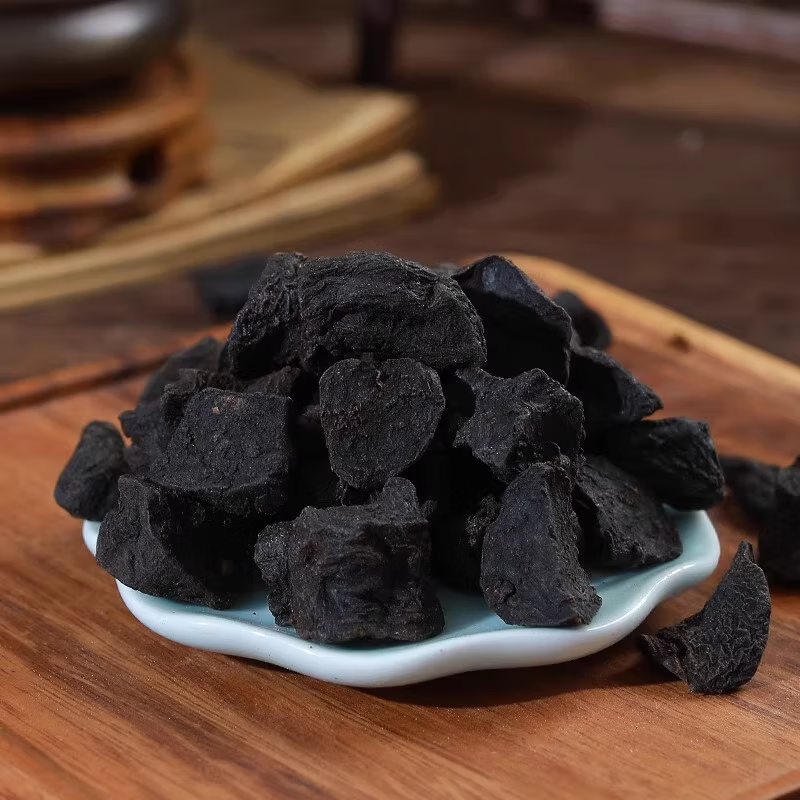



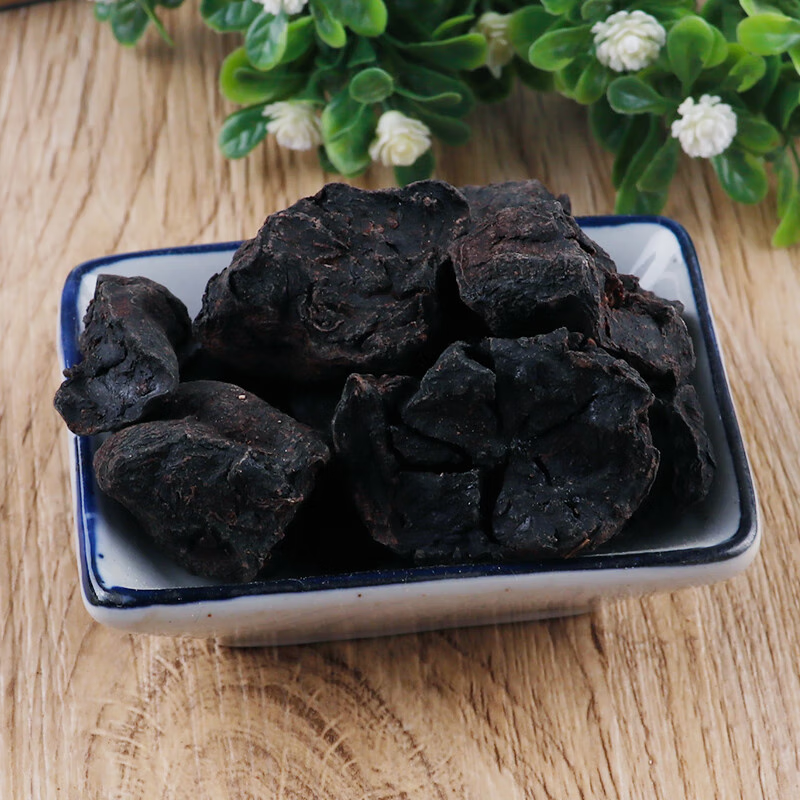


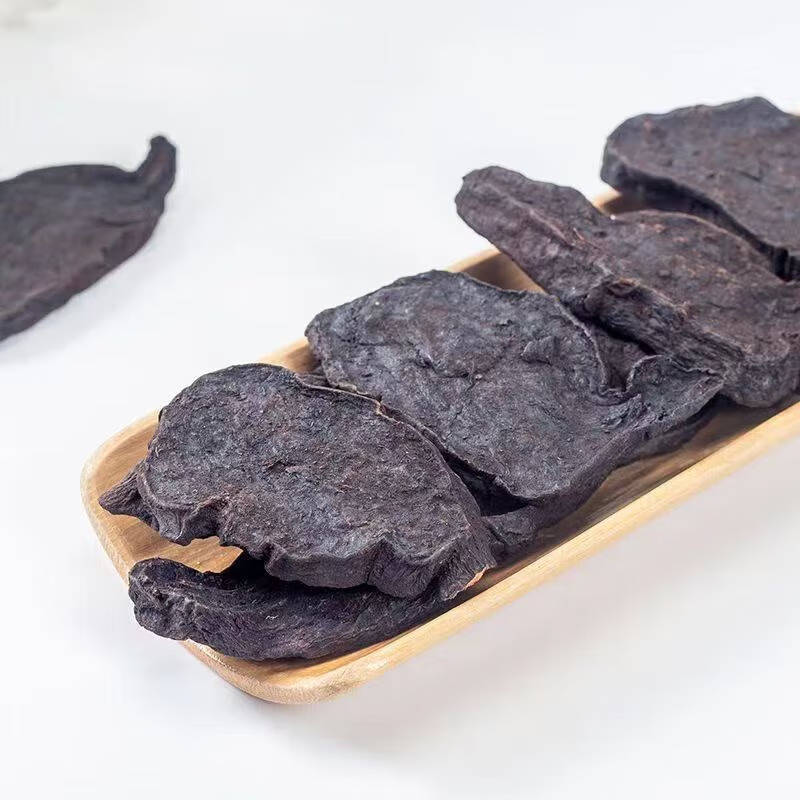



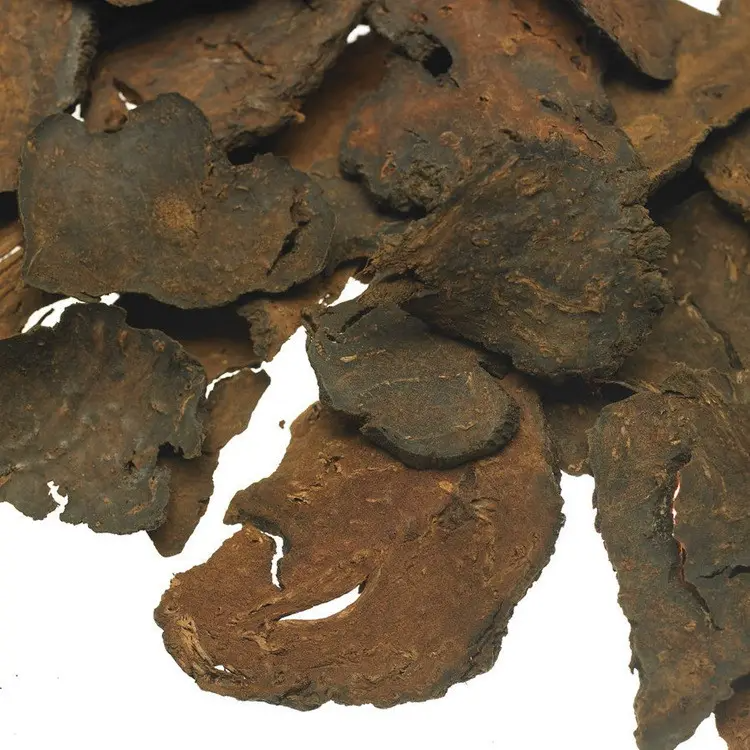
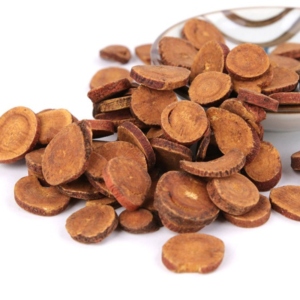

Commentaires
Il n'y a pas encore de critiques.